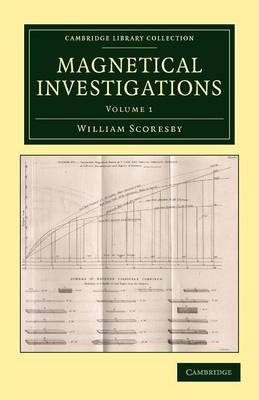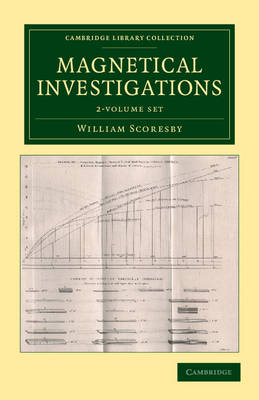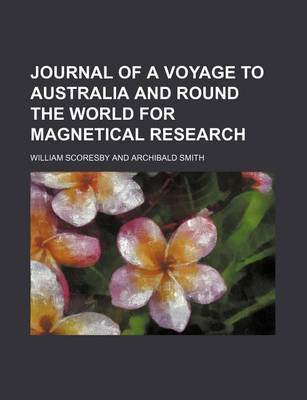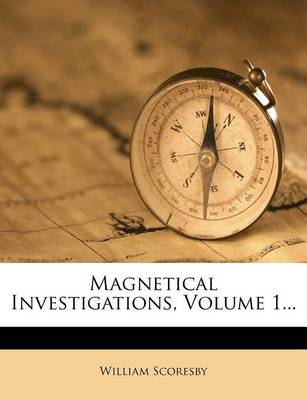Cambridge Library Collection - Technology
1 primary work • 5 total works
Volume 2
Published between 1839 and 1852, this two-volume work records the contribution of William Scoresby (1789–1857) to magnetic science, a field he considered one of 'grandeur'. The result of laborious investigations into magnetism and (with James Prescott Joule) electromagnetism, Scoresby's work was particularly concerned with improving the accuracy of ships' compasses. A whaler, scientist and clergyman, he epitomised the contribution which could be made to exploration and science by provincial merchant mariners - men often less celebrated than their counterparts in the Royal Navy or in metropolitan learned societies. In addition to his pioneering work on magnetic science, Scoresby furthered knowledge of Arctic meteorology, oceanography and geography. Volume 1 considers the magnetism of steel and suggests ways to determine its quality and hardness.
Published between 1839 and 1852, this two-volume work records the contribution of William Scoresby (1789-1857) to magnetic science, a field he considered one of 'grandeur'. The result of laborious investigations into magnetism and (with James Prescott Joule) electromagnetism, Scoresby's work was particularly concerned with improving the accuracy of ships' compasses. A whaler, scientist and clergyman, he epitomised the contribution which could be made to exploration and science by provincial merchant mariners - men often less celebrated than their counterparts in the Royal Navy or in metropolitan learned societies. In addition to his pioneering work on magnetic science, Scoresby furthered knowledge of Arctic meteorology, oceanography and geography.
Journal of a Voyage to Australia and Round the World for Magnetical Research
by William Scoresby
Published 21 April 2010
This work by William Scoresby (1789-1857) was edited by Archibald Smith (1813-1872) and published posthumously in 1859. It is the account of Scoresby's final voyage and last scientific study, which took place between February and August 1856. Scoresby made his Australian voyage on board the Royal Charter, owned by the Liverpool and Australia Steam Navigation Company. He wished to observe the changes that take place in the magnetic state of iron ships travelling on a north-to-south magnetic latitude, and to assess how magnetic changes affect the working of a compass so that he could discover the most reliable location for it on board ship. The first part of the work is an exposition of magnetic principles, followed by the results and conclusions of Scoresby's experiments. The second part contains a travel account of the actual voyage. It is a key work of nineteenth-century navigation science.
Published between 1839 and 1852, this two-volume work records the contribution of William Scoresby (1789-1857) to magnetic science, a field he considered one of 'grandeur'. The result of laborious investigations into magnetism and (with James Prescott Joule) electromagnetism, Scoresby's work was particularly concerned with improving the accuracy of ships' compasses. A whaler, scientist and clergyman, he epitomised the contribution which could be made to exploration and science by provincial merchant mariners - men often less celebrated than their counterparts in the Royal Navy or in metropolitan learned societies. In addition to his pioneering work on magnetic science, Scoresby furthered knowledge of Arctic meteorology, oceanography and geography. Volume 1 considers the magnetism of steel and suggests ways to determine its quality and hardness.
Published between 1839 and 1852, this two-volume work records the contribution of William Scoresby (1789–1857) to magnetic science, a field he considered one of 'grandeur'. The result of laborious investigations into magnetism and (with James Prescott Joule) electromagnetism, Scoresby's work was particularly concerned with improving the accuracy of ships' compasses. A whaler, scientist and clergyman, he epitomised the contribution which could be made to exploration and science by provincial merchant mariners - men often less celebrated than their counterparts in the Royal Navy or in metropolitan learned societies. In addition to his pioneering work on magnetic science, Scoresby furthered knowledge of Arctic meteorology, oceanography and geography. Volume 2 records Scoresby's investigations into the problem of navigating on iron-built ships, the section on shipwrecks proving just how pressing this was.




